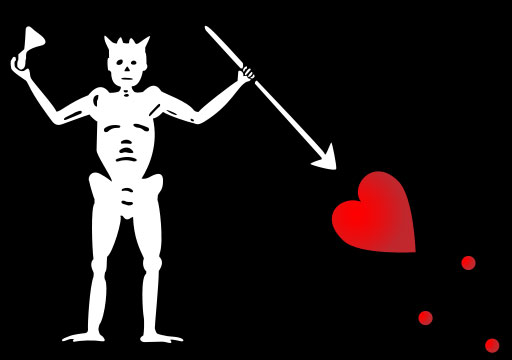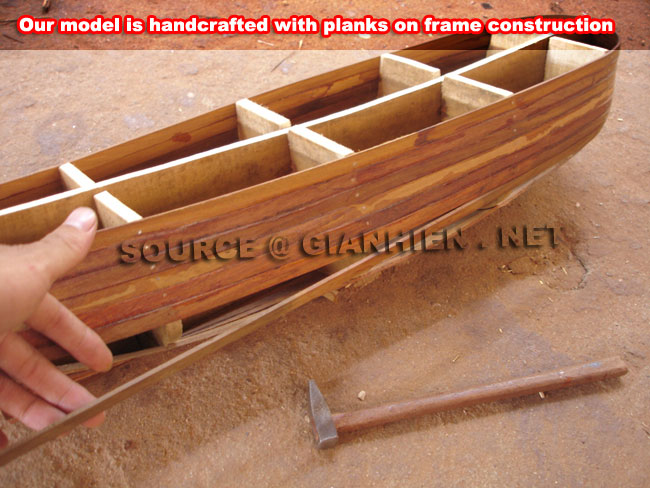|

HISTORY
Queen Anne's Revenge was the name of English pirate Blackbeard's
flagship, used by him for less than a year but an effective tool
in his prize taking. Blackbeard was said to have gone aground in
1718 in the ship in Beaufort Inlet, Carteret County, North
Carolina. In late 1996, Intersal, the private contractor working
for the state of North Carolina in marine recovery, discovered
the remains of a vessel that people believe is likely to be
Queen Anne's Revenge.
History
The 3,000-ton vessel, originally named Concord, was a
french-man-of-war built in the Kingdom of Great Britain in 1710.
She was captured by the French a year later. The ship was
modified to hold more cargo, including slaves, and renamed La
Concorde de Nantes. The slave ship was captured again by the
pirate Captain Benjamin Hornigold on November 28, 1717 near the
island of Martinique. Hornigold turned the ship over to one of
his pirates—Edward Teach, who was later known as Blackbeard—and
made him captain. His first mate, Christopher Blackwood (known
as Blackbeard's Claw) was feared as a ferocious combatant and
led many of Blackbeard's boarding parties.
Blackbeard converted La Concorde into his flagship, probably
adding guns and renaming her Queen Anne's Revenge. The name may
have come from the War of the Spanish Succession, known in the
Americas as Queen Anne's War and one in which Blackbeard had
fought, or possibly named it after Anne in sympathy to the
Stuart claim to the British throne. Blackbeard ranged with this
ship from the west coast of Africa to the Caribbean, attacking
British, Dutch and Portuguese ships along the way.
Shortly after blockading Charleston harbor (May 1718) and
refusing to accept the Governor's pardon, Blackbeard ran Queen
Anne's Revenge aground while attempting to enter Beaufort Inlet,
North Carolina. Blackbeard disbanded his flotilla and escaped by
transferring supplies onto the smaller ship Adventure. The
pirate captain abandoned several crew members on a small island
nearby. They were later rescued by Captain Stede Bonnet. Some
sources suggest that Blackbeard deliberately grounded the ships
as an excuse to disperse the crew. Shortly afterward, he
surrendered and accepted a royal pardon for his remaining crew
and himself from Governor Charles Eden at Bath, North Carolina.
Possible discovery
Intersal Inc., a private research firm, discovered the site
believed to be "Queen Anne’s Revenge" on November 21, 1996. QAR
was located by Intersal’s director of operations, Mike Daniel,
who used historical research provided by Intersal’s president,
Phil Masters. The location of the vessel is in the Atlantic
Ocean in shallow water offshore from Fort Macon State Park,
Atlantic Beach, North Carolina. Several of the guns and more
than 16,000 artifacts have been recovered from the wreckage;
however, none of them appears to be of French origin (as would
be expected from a French slave ship). They are mostly of
British origin (as would be expected with a colonial pirate
crew).
For one week in 2000 and 2001, live underwater video of the
project was uploaded to the internet as a part of the DiveLive
educational program that reached thousands of children around
the world. This project enabled students to talk to scientists
and learn about methods and technologies utilized by the
Archaeology team.
Project Director Mark Wilde-Ramsing of the North Carolina
Underwater Archaeology Branch supervised recovery of artifacts
from the site through the 2007 field season. In November 2006
and 2007, more artifacts were discovered at the site and brought
to the surface. The additional artifacts appear to support the
claim that the wreck is that of Queen Anne's Revenge. Among
current evidence to support this theory is that the cannon were
found loaded. In addition, there were more cannon than would be
expected for a ship of this size, the cannon being of different
makes. Depth markings on the part of the stern being recovered
point to have been made according to the French (and not
English) foot measurement.
By the end of 2007, approximately 1/3 of the wreck was fully
excavated. Artifacts are undergoing conservation. The North
Carolina Department of Cultural Resources set up the website
Queen Anne's Revenge to build on intense public interest in the
finds.
|

